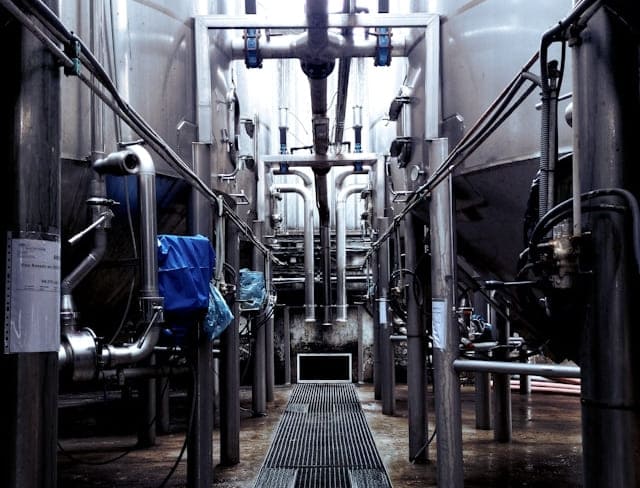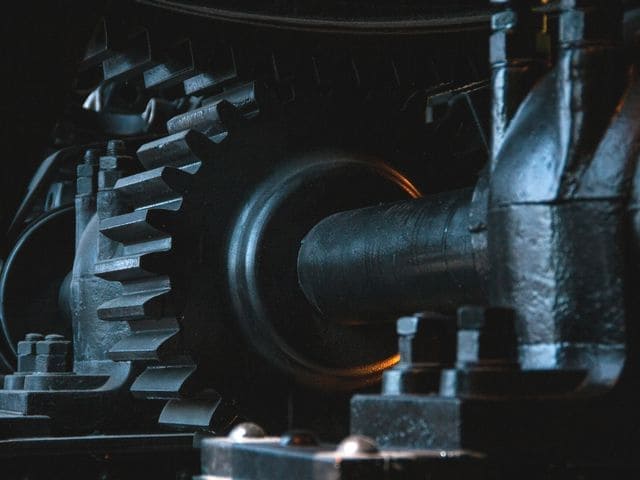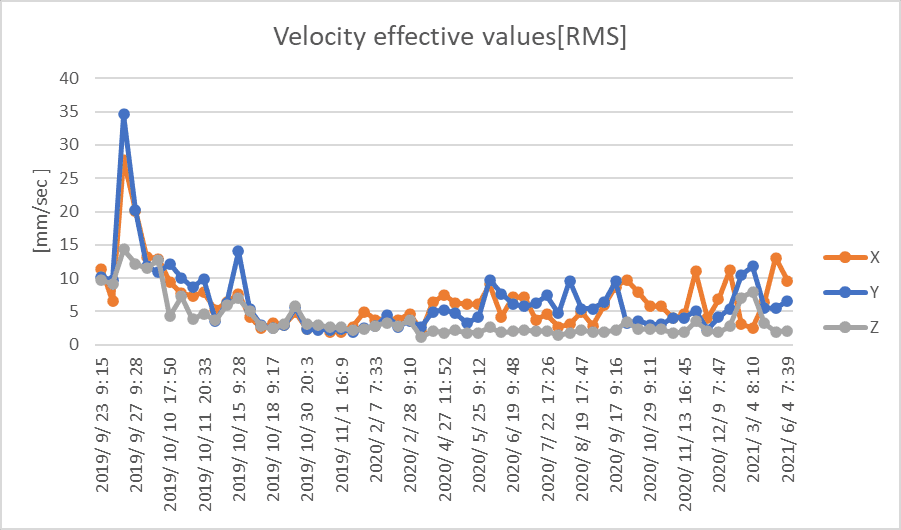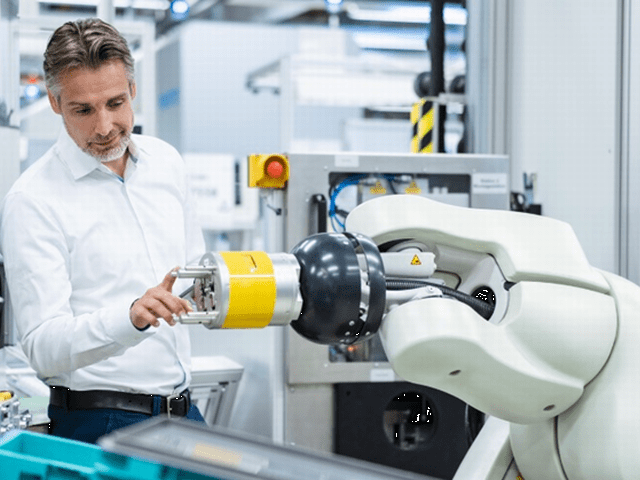

All Things for Condition Monitoring
What is condition monitoring? How can it work efficiently? This page explains everything about condition monitoring.
- What is Condition Monitoring
- What is Vibration Analysis
- Measurements are taken with Vibration Analysis
- How does vibration work
- Typical output options for vibration sensors
- Reviewing the importance of monitoring vibrations
- What kind of failures are detected with vibration
- Overall benefits of detecting failure with condition monitoring system
- Example industry that benefit from monitoring system
- Disadvantage of Vibration Monitoring
What is Condition Monitoring


Today, we live in an era where businesses rely on various technologies to operate successfully. Thus, it is essential for businesses to have constant health surveillance on their machine or components of it. However, this is easier said than done. Depending on the industry, facilities may be located in hazardous locations for constant visits. Furthermore, visiting might be costly for a business as it adds to the cost of labor and transportation. Especially, since most parts have to often operate 24 hours each day, seven days per week.
To meet particular demand, the concept of condition monitoring came to existence. Monitoring a particular machinery condition, such as vibration, is known as condition monitoring (CM). This aims to detect signs of significant changes that can indicate any impending failure. This allows businesses to be more intelligent and proactive. The data collected provides valuable information about the current and historical state of the machine. Additionally, it also creates predictions for the machine’s future behavior. The method is typically used on rotating equipment such as gearboxes, reciprocating engines, centrifugal machines, or backup systems.
Two methods for condition monitoring
There are two standard methods for condition monitoring: trend monitoring and condition checking. These two methods provide an inside look at how the machine or the components of the device will operate over time.


Trend Monitoring
This is a continuous, regular measurement, and interpretation of data. The method involves studying the behavioral trend of the machine or a component of it.
An example of trend monitoring is routinely tracking airplane engine data to detect and diagnose abnormalities in engine performance to prevent costly damage.
- Advantage : The advantage of trend monitoring is that it can be replicated, checked, updated, and refined to guide strategic planning.
- Disadvantage : There are certain limitations with trend monitoring. There might be certain turning points which create unexpected challenge
Condition Checking
This involves taking periodic check measurements with an appropriate indicator while the machine is running. The measurement taken here is to see the condition of the machine or a component of it while it is running.
An example of condition checking is using an oil sight glass like a condition monitoring pod to check the condition of a machine’s lubricant in real-time.
What is Vibration Analysis


Vibration Analysis is the process of measuring the vibration levels and frequencies of machinery. The measurement has three parameters: acceleration, displacement, and velocity. The information collected is used to analyze the machine’s or component’s health. Here are the following problems that can be detected with vibration analysis.
- Imbalances
- Bearing Failures
- Mechanical Looseness
- Misalignment
- Resonance and Natural Frequencies
- Electrical Motor Faults
- Bent Shafts
- Gearbox Failures
- Empty Space or Bubbles In Pumps
- Critical Speeds
Furthermore, vibration analysis also comes in various categories of measurements.
- Overall Level Of Vibration : This is an initial test check that is performed on rotating machinery.
- Spectral Analysis Of Vibration : This is the process of transforming a signal from a time domain to a frequency domain. This is usually done using FFT.
- Discrete Frequency Monitoring : This is a measurement usually applied to specific components of the machine. This compares the generated vibration level with the component’s expected vibration level.
- Shock Pulse Monitoring : A predictive maintenance technique that monitors rolling-element bearings with a hand-held instrument.
Measurements are taken with Vibration Analysis
Recall that condition monitoring uses vibration monitoring. Vibration sensors give businesses the ability to record speed, acceleration, temperature, and bearing condition characteristics.
Here are the following conditions of the machine that can be read from the parameters.
- Vibration velocity RMS : The change due to component fatigue such as alignment errors or imbalance problems.
- Vibration acceleration : This is affected by mechanical friction due to the lack of lubrication, bearing wear, or a dragging part on the machine.
- Temperature output : Vibration sensors have the ability to detect abnormal or irregular temperature behavior. These patterns may occur due to high friction, electrical problems, or insufficient lubrication.
- Bearing condition : The characteristic value that is used to determine bearing wear. This value is calculated by dividing the peak acceleration by the RMS acceleration value.
How does vibration work


There are two standard technologies used in vibration sensors: MEMS and Piezo.
- MEMS Technology : MEMS is an acronym for Micro Electro Mechanical System. Vibration sensors are placed on the board to measure the gravitational acceleration acting on the mechanical element. The capacitance between the plates is monitored and then converted into an accurate result. Typically, they have a frequency response of one Hz to two kilohertz.
- Piezo Technology : This technology measures the electrical potential created by applying force to metal plates with quartz crystals between them. Piezo has a frequency response of five Hz to 10 kilohertz
As a business, if you are interested in smaller, less expensive, and easier methods of installation, we recommend using MEMS over Piezo.
The vibration system keeps track of four key metrics.
- Low Frequency Vibration : This is the core intended vibration frequency defined by the motor rotational speed and harmonics of the core frequency.
- High Frequency Vibration : This is an audible level of squeaks and squeals from progressive bearing failures.
- Amplitude Progressions : This is the vibration level at each frequency over a certain period.
- Temperature : This is the temperature change, how hot the bearing is over a certain period.
All of this information is logged in monitoring software. Then the software compares and contrasts with average behavior. If the readings are outside the range, the system will alert the user. Technicians or specialists can use the data to identify patterns and predict the root cause of the problem.
Typical output options for vibration sensors
- Analog output
- IO Link output option : This option provides access to acceleration, velocity, temperature, and bearing condition characteristics in one sensor. Furthermore, it also provides the ability to connect an IO-Link master that can take all vibration information.
- Cloud : Data collected can be viewed and analyzed inside the business area or the globe. Cloud-based software stores and delivers data granting all business members the ability to manage, view, and asset data inexpensively.
Reviewing the importance of monitoring vibrations


In a previous post, the importance of vibration sensors was listed. Monitoring vibration is beneficial for any businesses that use heavy equipment. Here are brief advantages of vibration analysis.
- Simplified Monitoring : Vibration sensing makes maintenance easier for businesses. The key device that collects data is usually set up easily or conveniently in comparison. Furthermore, data is collected and uploaded to the desired location such as a cloud automatically without human assistance.
- Understand damage sources : Different machines will fail for various reasons and identifying them is a challenging task. However, vibration data can be used in root cause analysis (RCA) to find the source of the problem. Technicians can use vibration to identify the sources of damage so they can perform appropriate maintenance or repairs quickly and accordingly
- Monitor repair needs : A business must create effective and efficient schedules for workers and work-related events. These events also include maintenance and repairs. Since upkeep and repairs will pause work, it will make a sure loss for businesses. Therefore, companies need to predict maintenance needs. IoT Vibration Systems use real-time observation that allows technicians to identify and perform repairs before massive failures. Furthermore, with this real-time data, businesses can create an effective repair schedule that minimizes the loss as possible.
- Track equipment health : With real-time data, businesses can record with a specific range of time of their choice. Vibration data can determine how well a piece of equipment is handling new conditions and whether these conditions should be changed for improvement and efficiency.
These four importance minimizes the downtime for businesses as possible. Companies can repair when necessary rather than break down machines or critical failures.
What kind of failures are detected with vibration
For those still trying to convince, here is a list of failures that vibration monitoring can detect.
Bearing faults


Bearing is a common feature of rotating equipment. It must be fitted and custom designed to a machine so it can function properly. Since the bearing is an essential component, this also implies that they are a common source of failure. Potential bearing defects include the following:
- Lubrication
Under, over, and lubrication contamination is one of the leading causes that result in bearing faults. - Design : Improper bearing design is another common cause of failure as a small design defect can lead to rapid fatigue and equipment damage.
- Mounting and alignment : Improper alignment can place excess stress on the wrong areas, which fails.
- Fatigue and wear : Wear can result in vibration that will further wear the machine over time.
Failure to detect them will rapidly lead to machinery malfunctions. On the bright side, vibration sensing has been proven to be a valuable tool for bearing detection.
Lubrication Problems
Machines must be lubricated or be oiled or greased to minimize friction and allow smoother movement. In most cases, lubrication problems will often result in vibrations. Here are some common lubrication problems:
- Lubrication Starvation : This is one of the common problems related to lubrication in machinery. Insufficient lubrication can result in increase of friction and heat which can cause significant damage to a machinery over time.
- Over greasing : Remember the phrase, “too much of a good thing is bad.” Excessive lubrication can result in energy loss and increased operating temperatures. This will lead to equipment wear and fatigue.
- Contamination : This is another common problem caused by dirt and debris getting into the lubricant. The larger the invading particle, they can cause surface abrasions that pit and score parts causing fatigue and damage over time.
Gear Mesh Defects


This is a vibration-related problem caused by contact between gears as they rotate inside the machine. Gears must be aligned to flow smoothly for the device to function correctly. Gear defects will result in inefficient function, increased stress, and noise that will damage the machine over time. Positional shifts or manufacturing errors often cause gear misalignment.
- Misalignment : Misalignment describes components other than the shafts such as motors or pumps. The cause of misalignment can occur because of improper assembly, maintenance error, component shifting, thermal expansion, and uneven wear. This can lead to undue stress over time adding to wear and fatigue.
- Imbalances : This is another common problem in rotating equipment and is defined as a rotating part with one portion that is slightly heavier than the rest. This is usually because of manufacturing defects, deformations, or maintenance errors. No matter what the reason is, they will all lead to damage. Furthermore, off-balance rotating parts create a centrifugal force placing stress at a higher rotational speed.
Overall benefits of detecting failure with condition monitoring system
Businesses that practice vibration monitoring have significant benefits. The benefits include the following:
Reduced maintenance expenses


Equipment repair and maintenance functions themselves are expensive. Costs can be significant due to the hiring of technicians, payment for tools and replacement parts, and the cost of labor identifying the problem. While the installation itself may be costly, conditioning monitoring helps identify problems before they become critical failures that increase the overall cost and loss.
Recall the common saying, “time is money.” Keeping up with and scheduling the machine’s health maintenance is time-consuming. Vibration sensor allows business to spend less time taking manual readings on machines or components. The time saved can be spent addressing actual problems that need immediate attention.
Improved maintenance planning
Vibration monitoring assists with predictive maintenance, a technique designed to help determine the condition of the equipment. This allows businesses to create better work schedules that accommodate orders, repairs, and downtime. This maximizes the efficiency of maintenance operations while minimizing the effect on overall productivity.
Maximized production
Damaged machines or components will lead to a less efficient business. Additionally, downtime for repairs or source detection will kill productivity. However, vibration sensing targets both of these issues as they identify problems early, and constant monitoring prevents critical failures avoiding downtime.
Increased equipment life spans
Any business knows that replacing components or entire machines is expensive. Thus, having them operate for a long time is a necessity for a business. By identifying what the problem is, vibration monitoring can keep the machine alive. Sometimes, businesses will replace machines or parts that can be easily repaired. Vibration monitoring allows businesses to find problems quickly and save money by repairing them rather than replacing them.
Safer workspace
As a business, it is important to take care of your worker’s health and well-being. This can happen by having a safe workspace. Damaged or malfunctioning machinery is a safety hazard and can be dangerous for technicians to perform maintenance. With vibration monitoring, critical failures can be caught early and technicians can be aware of potential dangers.
Example industry that benefit from monitoring system


What are specific ways in which businesses can benefit from vibration monitoring? Here are some of the following examples:
- HVAC : For an HVAC system to operate correctly, the fans and compressors must operate critically too. Remote vibration sensors can gather data and notify maintenance teams of potential problems.
- Chemical : Chemical processing requires strong equipment that operates for a long period of time. Furthermore, materials flowing through pumps and pipes can be corrosive and hazardous. Early warning is beneficial for chemical plants as the machine and worker’s health is essential, such that downtime can be dangerous and costly.
- Food and Beverage : Many food and beverage industries rely on rotating equipment, such as gearboxes, chillers, pumps, and rollers. Unnecessary downtime will halt the entire production line. However, real-time and historical vibration data can help teams to predict, analyze, and prepare machines and workers.
- Water and Wastewater : While there are financial costs, water and wastewater pumps have the responsibility to distribute good water quality. Downtime will negatively impact customer access and water quality. Vibration sensors ensure that water plant teams can move more maintenance in-house, reduce costs, and minimize time-based routes.
- Oil and Gas : Most oil and gas operators have facilities located in places that face extreme weather, dust, and sand. Therefore, having a smart device that monitors health can reduce unnecessary visits and increase the overall happiness of the workers.
There are many more markets and applications where vibration sensors can be used.
Disadvantage of Vibration Monitoring
However, there are some disadvantages for vibration monitoring. Here are some list of disadvantages:
- The first cost of implementing a new vibration sensor is relatively high
- Training your team to learn about the new system
- Installing new computers and softwares
While there are some negatives with using vibration monitoring, most of them are short run. In the long run, businesses can benefit from the various blessings that come with it. Furthermore, while most are factory or warehouse-based, various industries are applying these methods. We hope you take the time to consider and implement vibration monitoring to your work.
Try conanair for FREE now !
Users who have tried Conanair consistently praise it for :
- being easy to install and ready to use right away
- operable through a web browser with no app installation required
- capable of fully automatic measurements without the need for a cloud
- affordable while still including dedicated software
You can experience equipment anomaly detection and predictive maintenance at no cost. Please feel free to contact us for more information.
Please contact NSXe for any issues regarding facility maintenance
| Company Name | NSXe Co.Ltd - Nakayama Hydrothermal Industry Co., Ltd. |
|---|---|
| Head Office | 7686-10 Hirano-cho, Suzuka, Mie513-0835, Japan zip code 513-0835 |
| Phone | +81-90-2189-1398 |
| FAX | +81-59-379-4704 |
| Business Hours | 8:00~17:00 |
| Office Regular
Holiday |
Saturday afternoons, Sundays and public holidays |
| URL | https://conanair.com/ |
Please contact NSXe for any issues regarding facility maintenance
| Company Name | NSXe Co.Ltd - Nakayama Hydrothermal Industry Co., Ltd. |
|---|---|
| Head Office | 7686-10 Hirano-cho, Suzuka, Mie513-0835, Japan zip code 513-0835 |
| TEL | +81-90-2189-1398 |
| FAX | +81-59-379-4704 |
| Business Hours | 8:00~17:00 |
| Office Regular
Holiday |
Saturday afternoons, Sundays and public holidays |
| URL | https://conanair.com/ |






